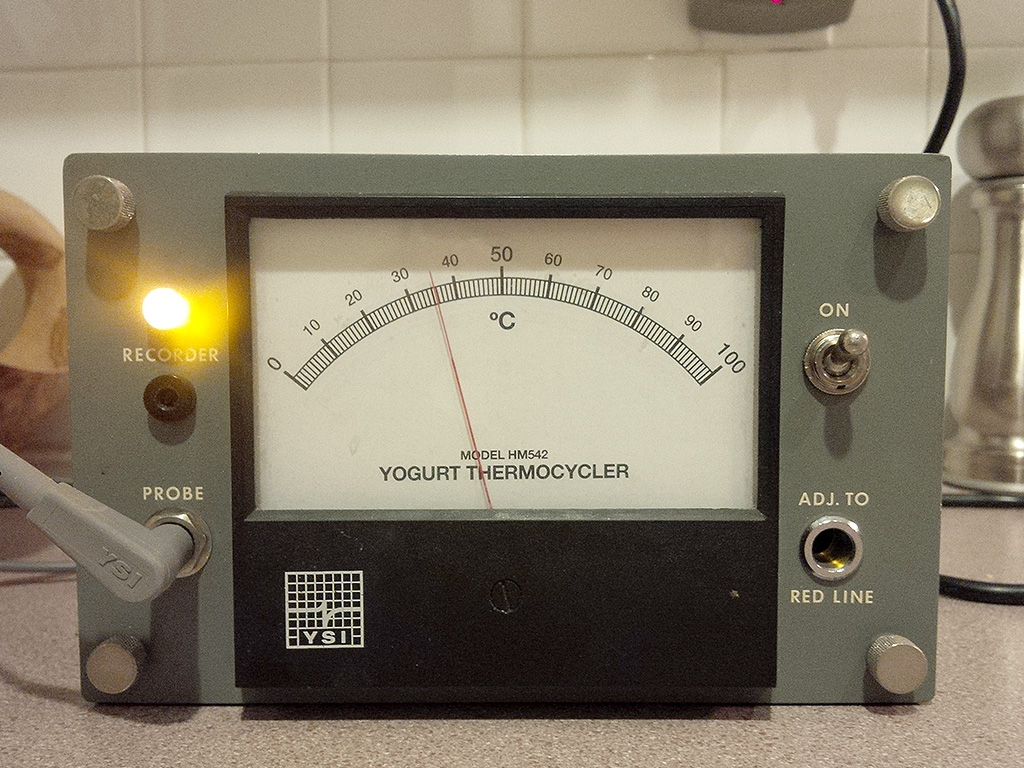The Waterland lab, where I am doing my postdoc, has an abiding interest in physical activity. Before I arrived, the prohibitive cost of commercial mouse running wheel setups lead the lab to use hamster wheels and bicycle odometers for this. But the pet store grade hamster wheels didn’t have real bearings, and recording the daily mileage on the bike odometers was onerous. Such data don’t allow for detailed, minute by minute analysis anyway.
My system continues to use the same hamster wheels, but with a sturdy bearing mount of my own design. The controller is Arduino-based with an Adafruit data logging shield. I ended up using reed switches going into the Arduino’s digital inputs, so a single controller can record from up to 10 wheels at once. Data are logged into a CSV file and saved on an SD card. I designed the hardware to rely entirely on off-the-shelf jellybean parts like hardware store fasteners, switchplates, and cheap pillow block bearings from eBay. The system is cheap, easily scaleable, and since there is very little by way of specialized hardware, easily repaired.

The cost of 30 wheels, including sensors and electronics, was only about $650 USD, making the whole setup actually cheaper per cage than the bike odometers.
I used this system in a recent study and it works very well. Ironically our lab has since secured funding to buy a commercial running wheel system, but at least mine wins in the price category by a country mile.
If you’re interested in building this system, or if you have any questions in general, please feel free to contact me. I am hoping to put up plans for this at some point, but in the meantime I’m happy to answer any questions you might have about its construction. As an example, I recently shared my code with John Mueller over at ShareYourRepair.com for his hamster wheel build and that turned out to be a really interesting project.
 Previous Project
Previous Project Next Project
Next Project
- Categories:
- Share Project :
 Previous Project
Previous Project Next Project
Next Project




